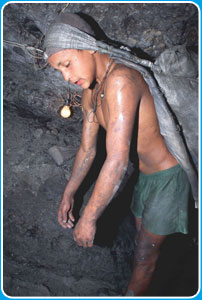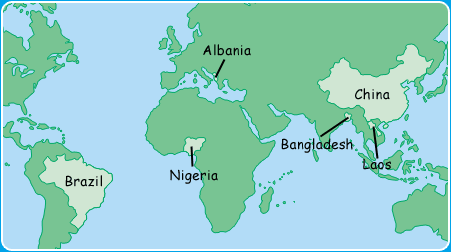| |
| With greater connections between places, an alarming trend known as child trafficking is on the rise. Unlike smuggling, the victims of trafficking have no control over where they go, and what they do when they get there. Instead, they are treated like a piece of merchandise to be bought or sold. In many ways, they are modern day slaves.
 |
 Some young Colombians work in coal mines. The work is dangerous and the hours are long.
Some young Colombians work in coal mines. The work is dangerous and the hours are long.
© ILO/P.Lissac |
Why does it happen?
Some children are trafficked within a country to work in big cities or tourist resorts. Trafficking across the border is often more organised and more complicated. A lot of children are moved from one place to another depending on where they are needed. Many different people are involved too. To start with, recruitment agents look for children that would be suitable. Other people like transporters, border guards, hotel and brothel owners - even friends and families - later play their part in child trafficking.
Child trafficking is a global problem - most countries are involved in some way, sending or receiving children, or as stop-off points along the way.
In groups, each click on one of the countries to read the true story of one young victim of trafficking. To compare your story to the others in the group, click here to print out a table to record the key points.

| Read more stories at UNICEF's End Child Exploitation site. |
 |
| Some of the stories have happy endings, yet most of these children have suffered terrifying situations. In the eyes of the police, they are illegal immigrants and are therefore criminals rather than victims. Because of drug problems or health problems caused by sexual activity, families reject some of the children that make it home. |

© UNICEF UK/J.Willott |
Solutions
Child trafficking is far from new, and under international law, slavery is illegal. Nevertheless, there are no simple solutions.
| Imagine you manage the budget for the United Nations campaign to tackle child trafficking. Click on the icons that give you choices for how you could spend the budget. Decide what percentage (if any) you would spend on the different projects, and put together a spending plan for the next financial year to justify your decisions. |
 |
Visit www.humantrafficking.org for more information on these possible solutions.
|
|







